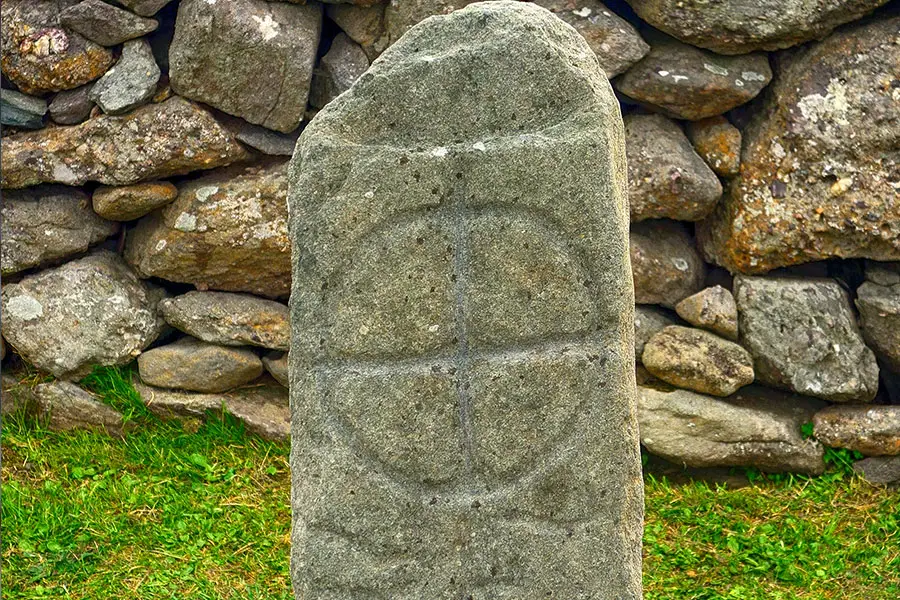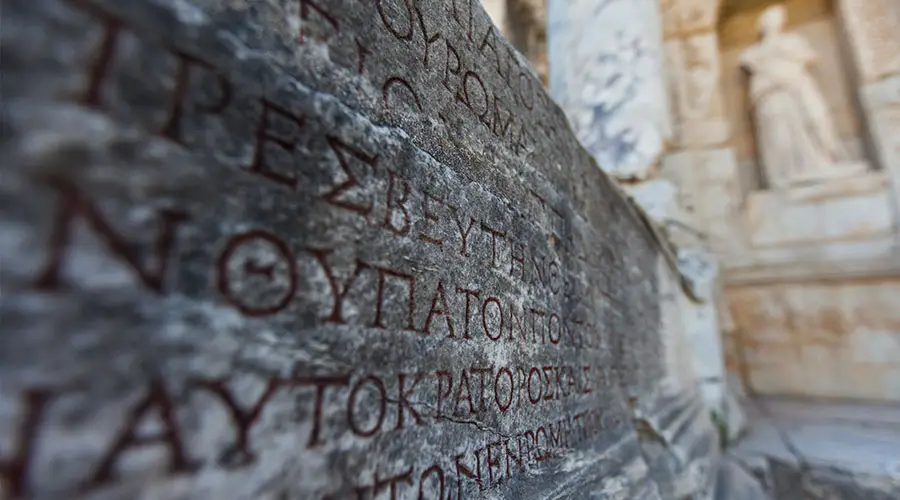The Druids were the priestly class of the Gauls, and were highly educated. But what language did they speak?
The Druids spoke Gaulish, which was a Celtic language. It was related to Irish and Welsh, but since the Druids and the larger Gaulish people adopted Latin during the Roman conquest, very little of the Gaulish language remains. Some people claim the Druids spoke a secret language, only known to initiates.
The Druids were known to keep their religious practices and knowledge secret and passed it down orally from generation to generation. This means that much of what is known about the Druids and their language comes from the accounts of classical writers, such as Julius Caesar, who wrote about their religious practices and beliefs.

Drueidan: the Secret Language of the Druids
For centuries there have been rumours that the Druids had their own secret language, which was known only to initiates. They say that this language, called Drueidan, was used for religious matters, including the ceremonies they would conduct in the the sacred groves of trees. If this language did exist, it may have been a form of an ancient Celtic language. Officially no evidence of this language exists, so it continues to only exist as rumours, or perhaps to to the modern initiates of the Druidic traditions.
The Gauls were one of Several Celtic Tribes
The Druids were part of the Gaulish culture, which was one of the Celtic cultures in ancient Europe. The Celts were a group of Indo-European peoples who lived in various parts of Europe, including present-day Ireland, Scotland, Wales, and parts of France and Spain.
The Gauls were a specific Celtic tribe who lived in ancient Gaul, which corresponds to modern-day France, and they had their own distinct culture and beliefs, including their own version of Druidism. The Druids were the priests of the Gaulish religion, and they played a central role in the spiritual and cultural life of the Gauls.
Although the legendary Druids were the priestly class of the Gauls, similar priestly classes also existed among other Celtic tribes, such as the Druids of Britain and Ireland. Although the specific practices and beliefs of these Druidic traditions may have differed, they all shared a common focus on nature worship, divination, and spiritual guidance. The Druids have also been described as being a transnational entity, in that their network of connections superseded the various Celtic tribes, which were often at war with each other.
The Druids were part of the Gaulish culture and were a specific priestly class among the Gauls, but the Celts, of which the Gauls were a part, had a wider presence in ancient Europe and had their own distinct Druidic traditions.
Ogham: Writing of the Celts
When exploring the language of the Druids, another mysterious aspect is Ogham, the writer symbols of the Celts. Ogham is dates back to the 4th century, and consists of a series of strokes or notches carved onto the edges of standing stones, which were arranged in vertical columns. The strokes represented different letters of the Ogham alphabet, which was made up of 20 characters, each associated with a particular tree or plant. Ogham was primarily used for inscriptions on stones and other permanent structures, and its use was limited to Ireland and parts of Scotland, Wales, and England. While the origins of Ogham are shrouded in mystery, it is believed to have been used for magical or ritualistic purposes as well as for recording historical events and personal names. Despite its limited use, Ogham has left an indelible mark on Celtic culture and continues to fascinate scholars and enthusiasts to this day.
The use of Ogham by the Druids is a matter of debate among scholars, and there is no conclusive evidence that definitively proves or disproves its use by this ancient Celtic priesthood. However, some historical sources and legends suggest that the Druids may have used Ogham as a tool for divination and communication. For example, the 12th-century Irish text Auraicept na n-Éces describes the Ogham alphabet as a tool of the Druids, and some Irish myths and sagas mention Ogham as a medium of magical communication.

Ogham inscriptions have been found in a variety of locations and contexts, including burial sites, boundary markers, and other non-religious settings, suggesting that it was a more widespread form of communication among the ancient Celts.
The Celtic People and their Languages
There was significant variation in the dialects spoken by the Celtic people, as they were widely dispersed across Europe and had different cultural and linguistic influences. The Celtic language was divided into two main branches: Continental Celtic, which was spoken in present-day France and Spain, and Insular Celtic, which was spoken in present-day Ireland, Scotland, and Wales.
Continental Celtic was further divided into two main dialects: Gaulish, which was spoken in ancient Gaul, and Lepontic, which was spoken in parts of present-day Switzerland and Italy. Insular Celtic was divided into three main dialects: Irish, Scottish Gaelic, and Welsh.
Each dialect had its own unique features, and there was a great deal of variation between the dialects, both in terms of pronunciation and vocabulary. This variation reflected the cultural and linguistic diversity of the Celtic peoples and the different influences that shaped their languages and cultures over time.
Key Characteristics of the Gaulish Language
Unfortunately, there is limited information available about the Gaulish language as spoken by the Druids, as much of what we know about the Gaulish language has been reconstructed from fragments of inscriptions and place names. However, based on what we do know, here are some key characteristics of the Gaulish language:
Celtic origin: Gaulish was a Celtic language and was closely related to other Celtic languages, such as Irish, Welsh, and Breton.
P-Celtic: Gaulish was a P-Celtic language, which means that it evolved from the earlier Celtic language that was spoken in ancient Europe.
Complex grammar: Gaulish had a complex grammar, with a rich system of inflections that allowed for the expression of subtle differences in meaning.
Vocabulary: Gaulish had a distinctive vocabulary that was influenced by the languages of the people and cultures that surrounded the Gauls.
Usage: Gaulish was used as the primary language of the Gauls, including the Druids, and was likely used for religious, legal, and administrative purposes.
It is worth noting that despite its widespread usage among the Gauls, the Gaulish language eventually disappeared as the Gauls adopted Latin, the language of the Romans, as their primary language. Today, only a few hundred words and inscriptions remain as evidence of the Gaulish language, and much of what we know about it has been reconstructed based on these limited sources.
The Druids and Latin
The process of the Druids learning Latin during the Roman conquests is not well documented, but it is likely that some of the Druids learned the language in order to communicate with the Romans and to maintain their influence and authority in Gaulish society.

The Druids were highly educated and were known for their vast knowledge of history, religion, and law, and it is believed that they were skilled in several languages, including Latin and Greek. This linguistic ability would have allowed the Druids to communicate with people from a variety of different cultures and backgrounds, and to share their religious beliefs and practices with a wider audience.
As the Romans often did when conquering other cultures, they allowed the Celtic society to continue operating as it had before, although overseen by Roman authorities. In this context, the Druids continued their high social status and their role as intermediaries between the Gauls and the Romans, and the Druids learned Latin as a way to maintain their influence and to negotiate with the Romans on behalf of their people.
Recommended Reading
If you want to continue exploring this subject more deeply, you can see which books I recommend by clicking here.

